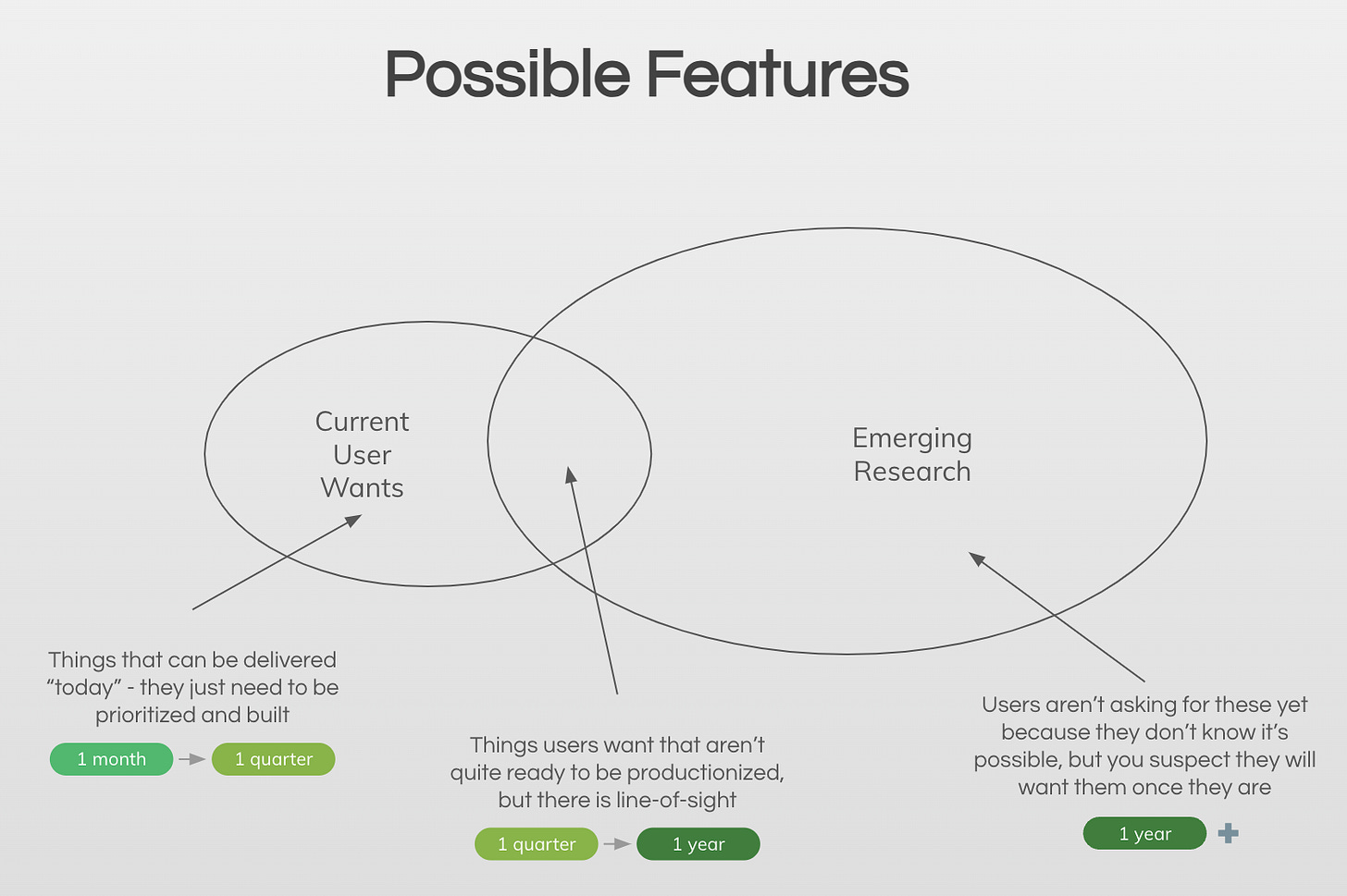Building an Annual Roadmap in the Fast-Paced World of Generative AI
How I plan for 12 months when everything will be different in 12 weeks
I’ve been spending a lot of time lately doing roadmap planning for 2024. Unlike previous years where planning has been more straightforward due to less variability in external forces, the fast-paced and evolving nature of Generative AI has required a different approach this year.
Three Places To Focus
Rather than focusing purely on the user, I’ve found myself balancing a few different variables:
Macro trends
Internal research
User needs
Macro Trends
To understand the macro trends that should influence my roadmap, I did some research - mainly reading and talking to relevant folks. There was no shortage of end-of-year prediction posts, analyses of the industry, and PoVs from key influencers. Not to mention the endless X (fka Twitter), Discord, and Reddit threads.
Internal Research
I then looked internally, focusing on 2 main things:
What exciting research was being done by other teams that I might want to incorporate into my roadmap?
What trends are we noticing from our own product usage?
User Needs
In addition to diving into trends, it’s always important to stay in touch with what users are actually asking for. These can be very specific features, or more general capabilities.
Three Timescales To Plan
I also found it helpful to plan the roadmap with three different timescales in mind:
1 month
1 quarter
1 year
1 month
The launches for this timeframe are very much focused on what we have next up in the queue. Typically these are things that didn’t quite make the cut from the previous year/launch (clean-up tasks), quick fixes that have been recently identified, and a few bigger wins that we feel confident in shipping.
1 quarter
Within a 3 month timeframe the idea is to have a more substantial launch queued up. There can be a little more risk in the things planned here, but the goal should be to drive certainty as fast as possible around the deliverables for this timeframe.
1 Year
This is where things start to get really fuzzy. In general, the goal here is to pre-plan and set the team up for a successful second half. You want to be ready for where the world is headed, not just where it’s at right now. This is where the macro trends come into play. There have been a lot of great and interesting predictions for 2024. I’m putting my eggs in a few of these baskets, and leaving room to better define exactly how they will fit into the roadmap as the year progresses. I’m also making sure that any groundwork that can be laid ahead of time to make these bets successful is factored into the 1 month and 1 quarter plans.
Leaving Space
Planning is a great exercise, and something that should be revisited often. Roadmaps will naturally evolve throughout the year.
When it comes to creating a roadmap that includes features and products that leverage generative AI functionality, you want to plan for where you think technology is going, not just where it is at today. So once you have identified the macro trends to watch, and accounted for them at a high level on your roadmap - keep a close eye on them, adding continuous detail to your plans as new information emerges. To do this effectively, make sure to leave room in your roadmap to be able to flesh out these details as they become clearer, and possibilities turn to realities.
You should also always build in a buffer for smaller tasks. I call this work “polish and positioning” in my roadmaps. It accounts for all the last minute items that inevitably come up. No matter how well you plan, new features and requests will always emerge late in the game. Whether you uncover a new customer need in UXR or a competitor launches a killer feature gaining lots of attention, you need room to react. Plan for this.
I’ll leave you with one word of caution: while being adaptive is important, you shouldn’t pivot too quickly. You can be too reactionary and it can be very de-stabilizing for a team. There’s a fine line between no strategy and a solidly adaptable one… the Generative AI era will favour those who are good at walking on the right side of this divide.





